Does your dog’s ears have a strong and unpleasant smell? It’s normal to have a mild scent, but a strong or foul smell could mean there’s a problem. Bad-smelling ears can be caused by ear infections, wax buildup, moisture, and allergies. Failure to treat these problems may result in pain, irritation, and even hearing loss.
Here we will have a look at the causes of smelly ears in dogs, how to prevent them, and when to see a vet.
Common Causes of Smelly Ears in Dogs
A bad odor from your dog’s ears isn’t just unpleasant—it’s often a sign of an issue that needs attention. Here are the most common causes:
1. Ear Infections
Ear infections are one of the main reasons for bad-smelling ears. Bacteria and yeast thrive in warm, moist environments, leading to infections that cause a foul odor. Common symptoms include:
- Redness and swelling inside the ear
- Excessive scratching or pawing at the ear
- Head shaking or tilting
- Brown, yellow, or black discharge
A study found that approximately 20% of dogs suffer from ear infections, with breeds that have floppy ears being at higher risk.
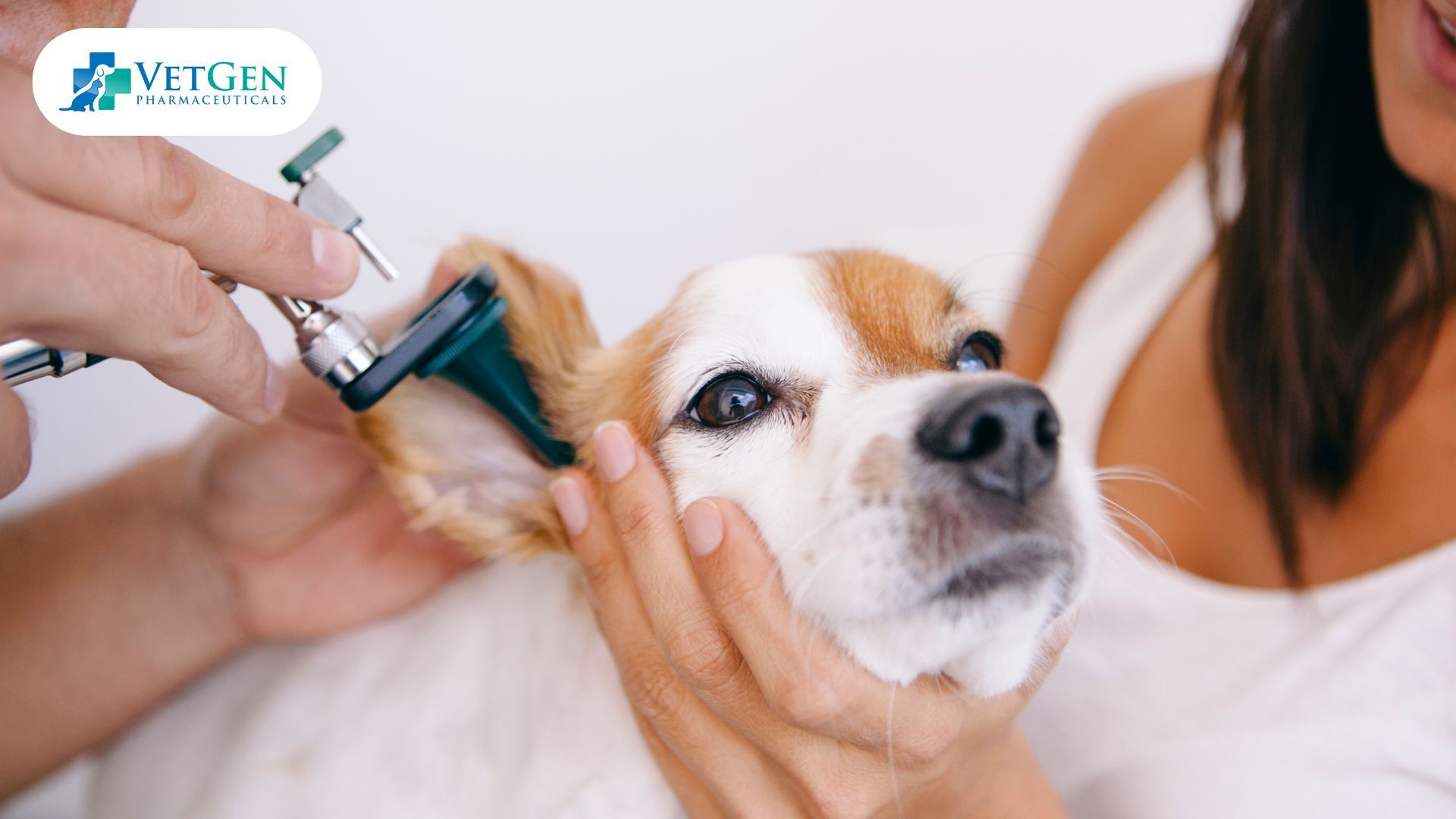
2. Yeast Overgrowth
Most cases of yeast infection have a musty, sweet smell. This occurs when the ears are too wet, turning into an ideal growing environment for yeast. Allergies or a weak immune system make dogs more likely to get yeast infections.
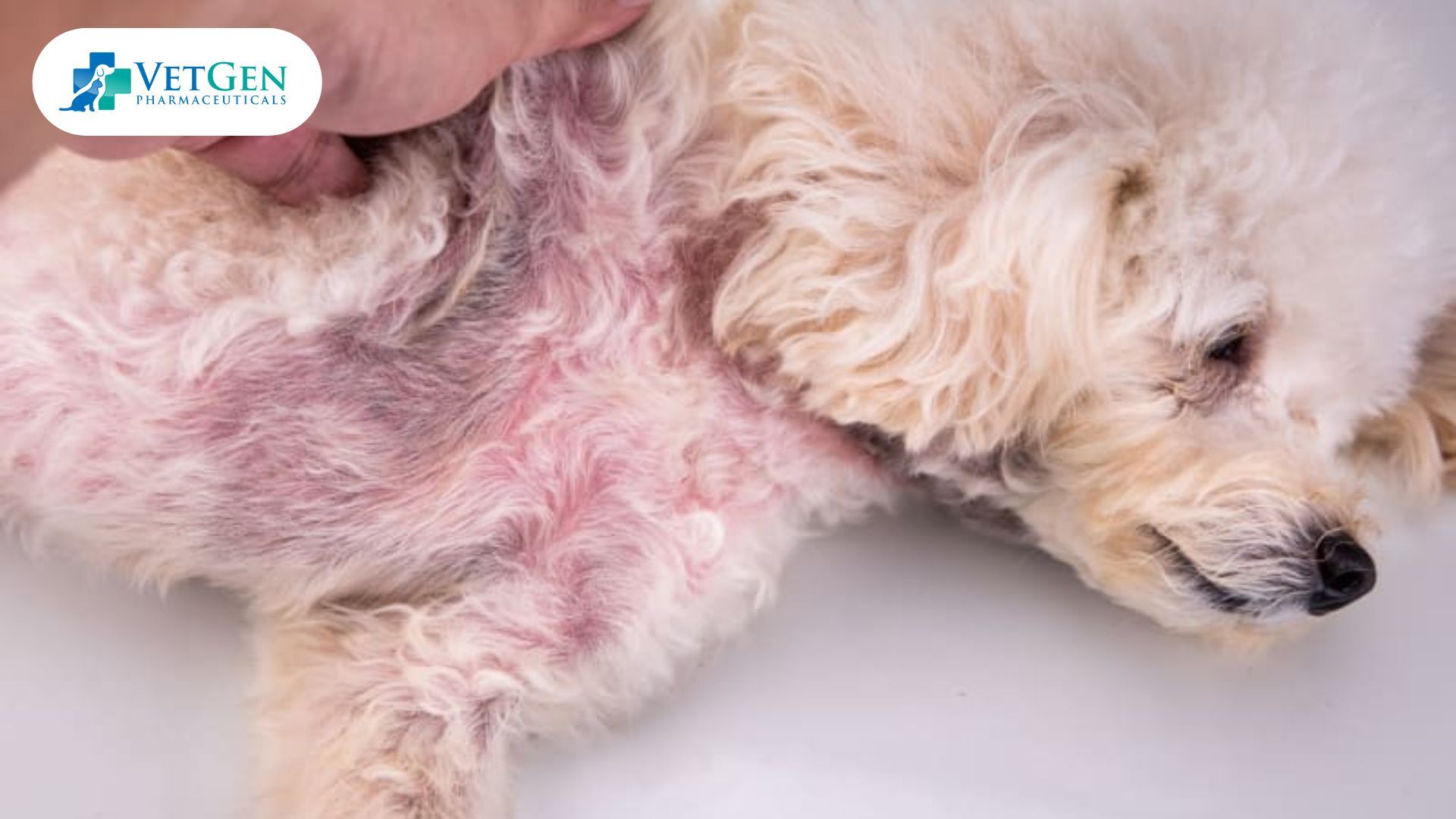
3. Ear Mites
Ear mites are tiny parasites that live inside the ear canal. They cause itching, inflammation, and a bad odor. Symptoms of ear mites include:
- Constant head shaking
- Dark brown or black discharge that looks like coffee grounds
- Excessive scratching
Ear mites are more common in puppies and outdoor dogs, as they can easily spread between animals.
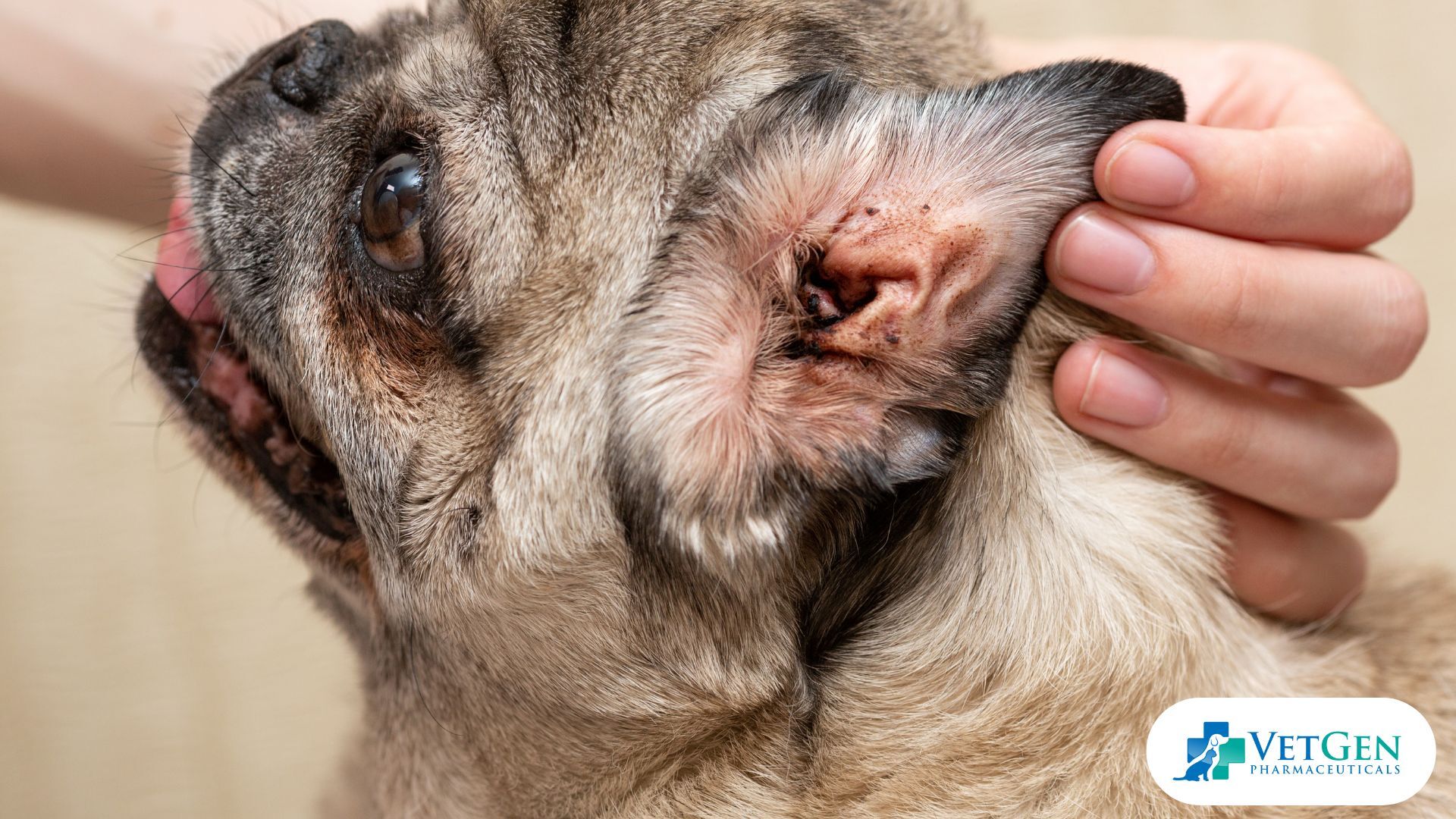
4. Wax Buildup
Earwax is normal, a small amount helps protect the ear. But, too much wax can also trap dirt and bacteria to cause bad odors. Dog breeds such as Cocker Spaniels and Basset Hounds produce excess amounts of earwax as compared to other breeds.
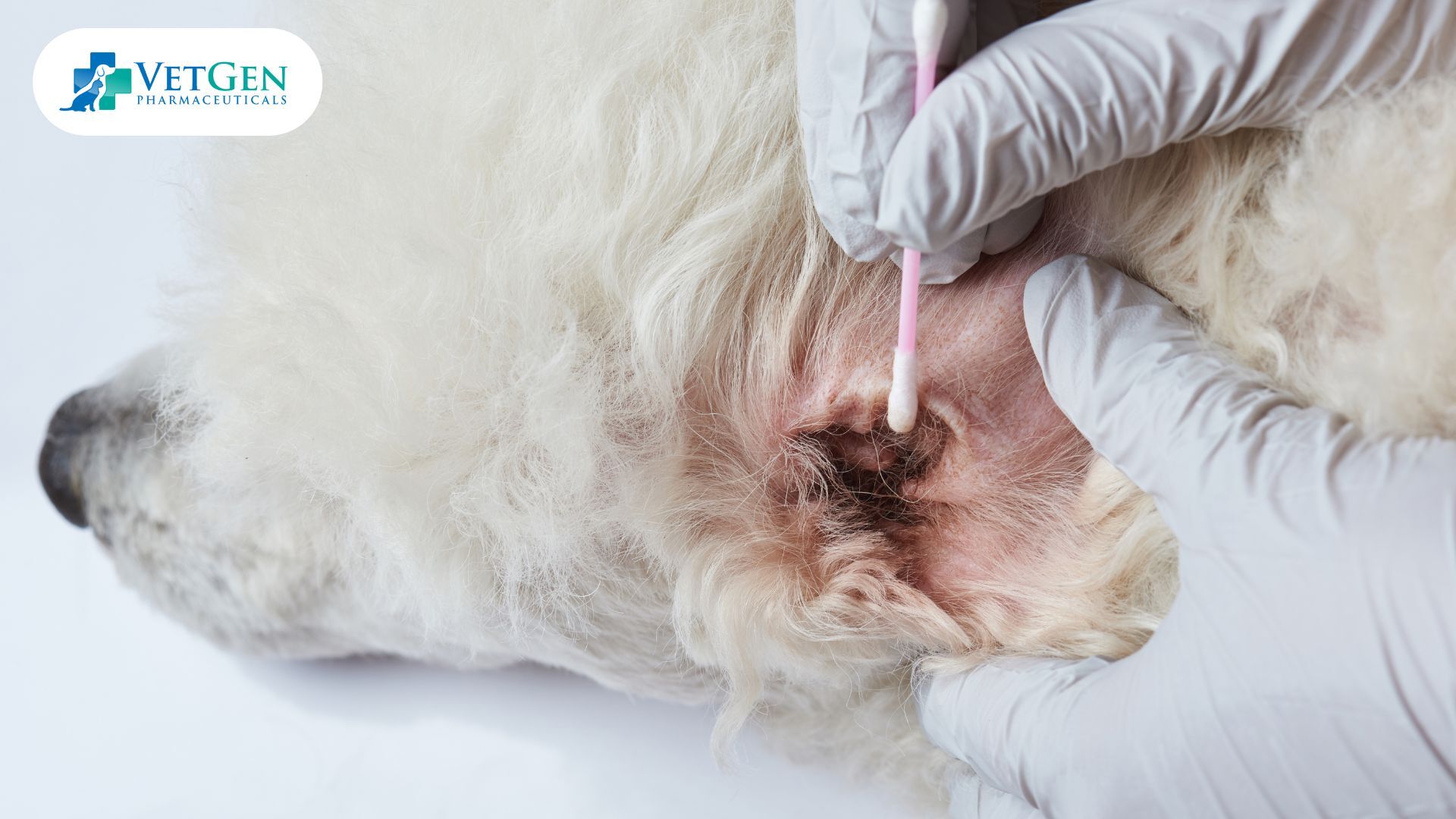
5. Foreign Objects
Dogs love to explore, and sometimes, small objects like grass seeds, dirt, or bugs can get stuck in their ears. If not removed, these objects can cause irritation, infections, and a foul smell.
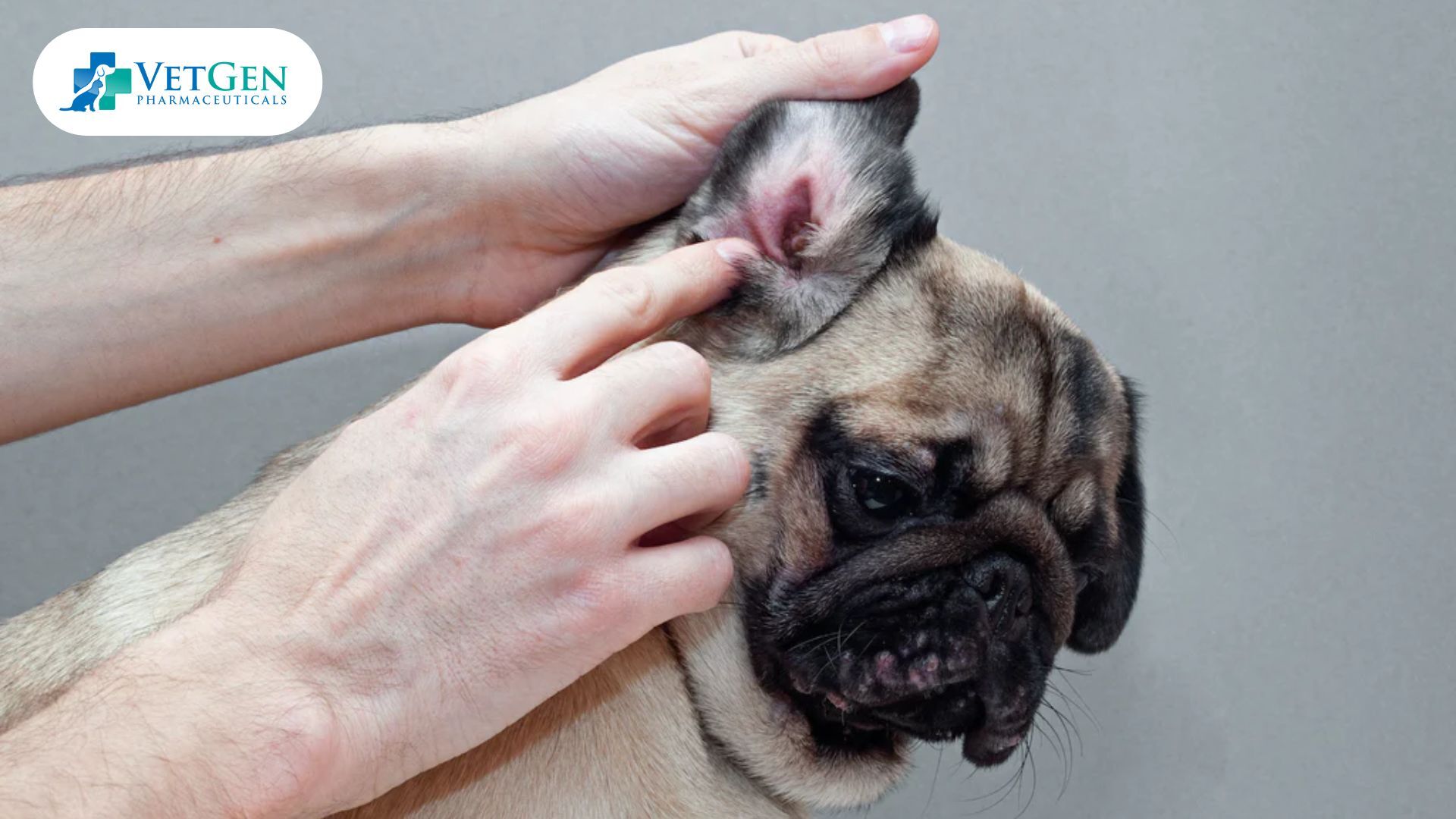
6. Allergies
Food or environmental allergies can cause inflammation in the ears, leading to infections and bad odors. Dogs with allergies may also experience:
- Itchy skin
- Excessive licking or chewing of paws
- Watery eyes
A study found that dogs with food allergies are more likely to develop chronic ear infections.

7. Moisture and Swimming
If a dog gets water trapped in his ears after swimming or bathing, it can create a perfect environment for the bacteria and yeast to grow. For this reason, many dogs will develop a swimmer’s ear resulting in a strong odor and irritation.

How to Prevent Smelly Ears in Dogs
Preventing bad-smelling ears starts with good hygiene and regular care. Here’s how you can keep your dog’s ears clean and healthy:
1. Clean Your Dog’s Ears Regularly
Routine ear cleaning helps remove excess wax, dirt, and bacteria. Use a vet-approved ear-cleaning solution and a cotton ball (never use cotton swabs, as they can push debris deeper into the ear).
2. Keep Ears Dry
After swimming or bathing, dry your dog’s ears thoroughly. Moisture buildup is one of the leading causes of ear infections.
3. Check for Allergies
If your dog has recurring ear problems, consider testing for allergies. A change in diet or environment may help prevent infections.
4. Trim Excess Ear Hair
Some breeds, like Poodles and Shih Tzus, have hair inside their ears that can trap moisture and debris. Regular grooming and trimming help reduce the risk of infections.
5. Use Vet-Approved Ear Drops
If your dog is prone to ear infections, your vet may recommend ear drops or medicated solutions to keep bacteria and yeast under control.
6. Monitor Your Dog’s Behavior
Frequent head shaking, scratching, or pawing at the ears may indicate an issue. Regularly check your dog’s ears for signs of redness, swelling, or unusual discharge.
When to See a Vet
If your dog’s ears smell bad despite regular cleaning, it’s time to see a vet. Seek veterinary care if you notice:
- A strong, persistent foul odor
- Red, swollen, or painful ears
- Unusual discharge (yellow, brown, or black)
- Excessive head shaking or scratching
- Loss of balance or difficulty hearing
- Scabs, sores, or excessive wax buildup
Ignoring these signs can lead to severe infections that require medical treatment, potentially causing permanent ear damage or hearing loss.
Conclusion
Smelly ears in dogs are often a sign of an underlying issue like an infection, wax buildup, or allergies. Regular ear cleaning, keeping ears dry, and monitoring for signs of discomfort can help prevent bad odors. If your dog’s ears continue to smell bad despite home care, consult a vet for proper diagnosis and treatment.
Visit VetGen Pharmaceuticals to read more about dog health and grooming tips. Learn how to reduce inflammation, boost immunity, and prevent common health issues. Give your pet the best care with VetGen Pharmaceuticals!
Frequently Asked Questions
How do I get rid of my dog's smelly ears?
Clean your dog’s ears with a vet-approved ear cleaner. Keep them dry after baths and swimming. Trim excess hair around the ears. If the smell persists, visit a vet to check for infections, allergies, or ear mites. Treat any underlying conditions for long-term relief.
How to flush out a dog's ears?
Use a vet-recommended ear-cleaning solution. Gently squeeze the solution into the ear canal, massage the base of the ear, and let your dog shake it out. Wipe away debris with a cotton ball. Never use water, alcohol, or cotton swabs inside the ear.
Can I give my dog coconut oil every day?
Yes, but in moderation. Coconut oil supports skin, coat, and digestion. Add a small amount to food—about 1 teaspoon per 10 pounds of body weight. Too much can cause weight gain or digestive issues. Always consult a vet before adding it to your dog’s diet.






